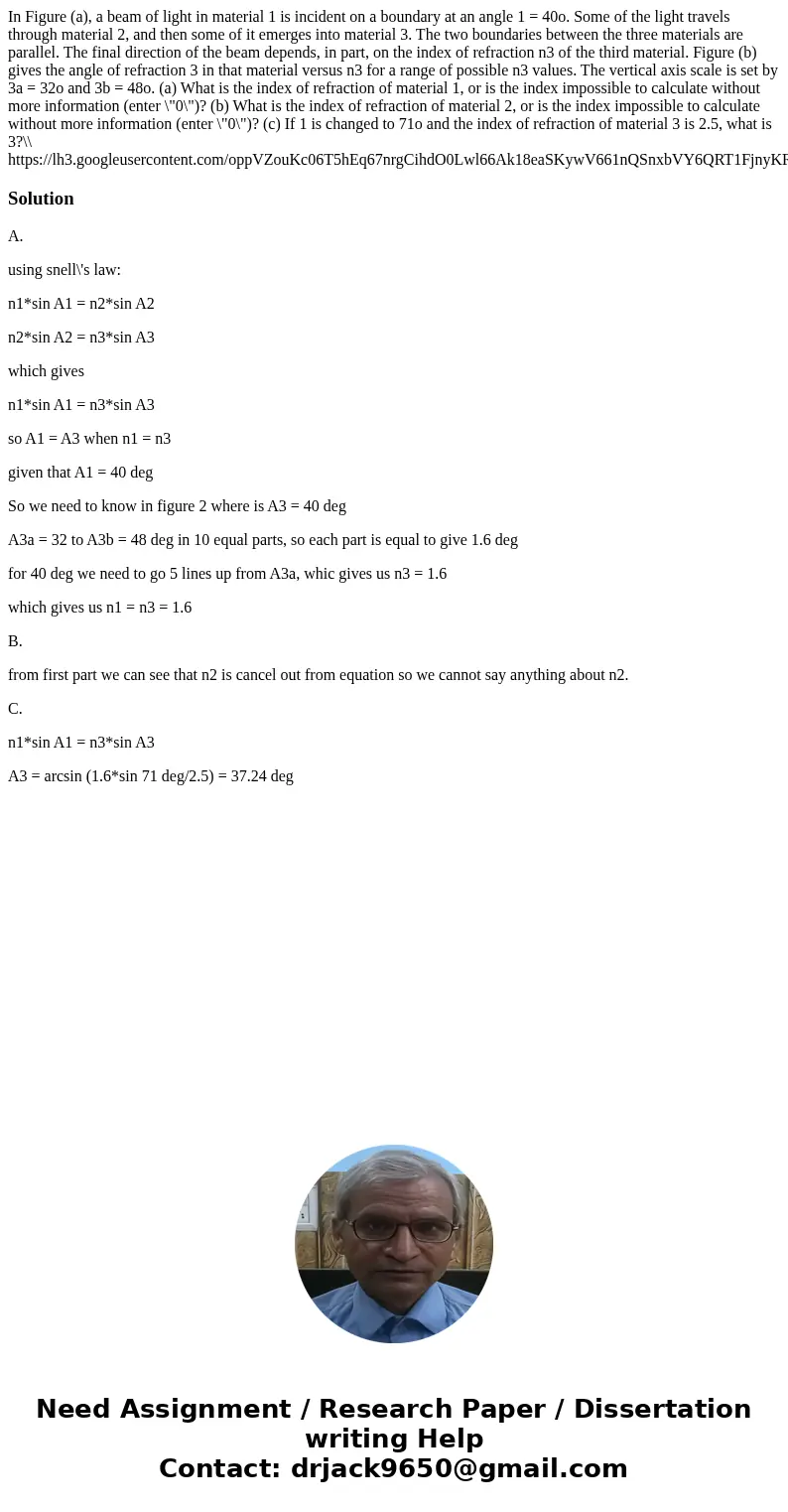In Figure a a beam of light in material 1 is incident on a b
In Figure (a), a beam of light in material 1 is incident on a boundary at an angle 1 = 40o. Some of the light travels through material 2, and then some of it emerges into material 3. The two boundaries between the three materials are parallel. The final direction of the beam depends, in part, on the index of refraction n3 of the third material. Figure (b) gives the angle of refraction 3 in that material versus n3 for a range of possible n3 values. The vertical axis scale is set by 3a = 32o and 3b = 48o. (a) What is the index of refraction of material 1, or is the index impossible to calculate without more information (enter \"0\")? (b) What is the index of refraction of material 2, or is the index impossible to calculate without more information (enter \"0\")? (c) If 1 is changed to 71o and the index of refraction of material 3 is 2.5, what is 3?\\ https://lh3.googleusercontent.com/oppVZouKc06T5hEq67nrgCihdO0Lwl66Ak18eaSKywV661nQSnxbVY6QRT1FjnyKRL59=s170
Solution
A.
using snell\'s law:
n1*sin A1 = n2*sin A2
n2*sin A2 = n3*sin A3
which gives
n1*sin A1 = n3*sin A3
so A1 = A3 when n1 = n3
given that A1 = 40 deg
So we need to know in figure 2 where is A3 = 40 deg
A3a = 32 to A3b = 48 deg in 10 equal parts, so each part is equal to give 1.6 deg
for 40 deg we need to go 5 lines up from A3a, whic gives us n3 = 1.6
which gives us n1 = n3 = 1.6
B.
from first part we can see that n2 is cancel out from equation so we cannot say anything about n2.
C.
n1*sin A1 = n3*sin A3
A3 = arcsin (1.6*sin 71 deg/2.5) = 37.24 deg

 Homework Sourse
Homework Sourse